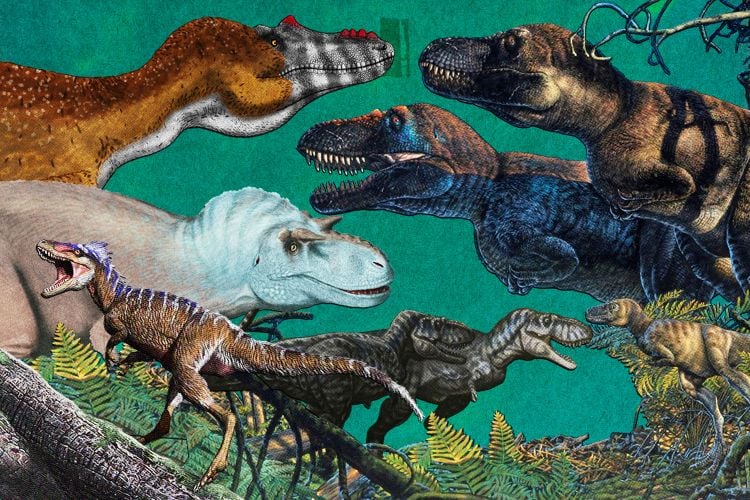Meet Ten Tyrannosaurs That Came Before T. Rex, From Small, Feathery Creatures to 30-Foot-Long Bone-Crushers
Everyone knows the famous tyrant lizard king, but its relatives amaze, too
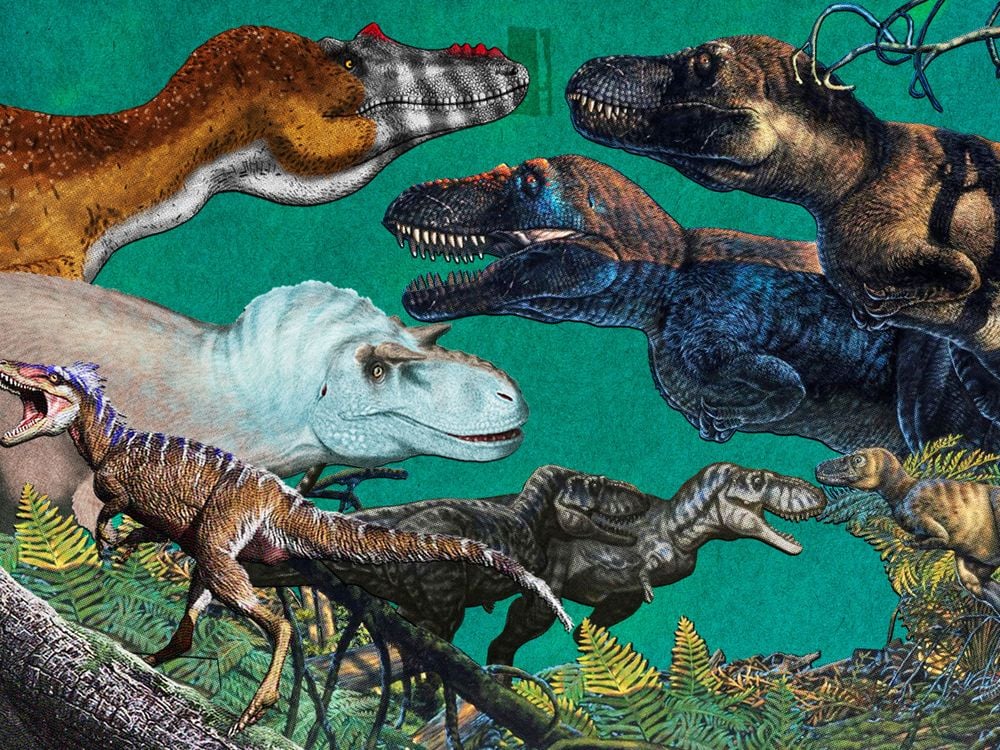
Key takeaways: A diverse group of tyrannosaurs lived over tens of millions of years
- The tyrant lizards ranged in size from around 5 feet long to more than 40 feet long.
- Tyrannosaurs roamed many different environments around the world, from what is now northern Alaska to what is currently the Gobi Desert.
More than a century after its discovery, Tyrannosaurus rex remains the most iconic dinosaur ever found. The immense carnivore is a household name and a movie star that also stands out as the most studied dinosaur of all. But T. rex was also the last of its meat-tearing family.
The earliest tyrannosaurs evolved about 166 million years ago. In those Jurassic days, tyrannosaurs were not giants. The carnivores were small, had long snouts and still had three fingers on each hand. But it was from such creatures that tyrannosaurs like the feathery Yutyrannus, the sleek Gorgosaurus and, of course, the massive T. rex would eventually evolve. The long and complex backstory of tyrannosaurs is not one of dinosaur dominance but that of a group of reptilian underdogs that lived alongside larger predators until they stepped into the apex predator role themselves. Here is a list of some of the tyrannosaurs that stalked the planet millions of years before T. rex.
Proceratosaurus
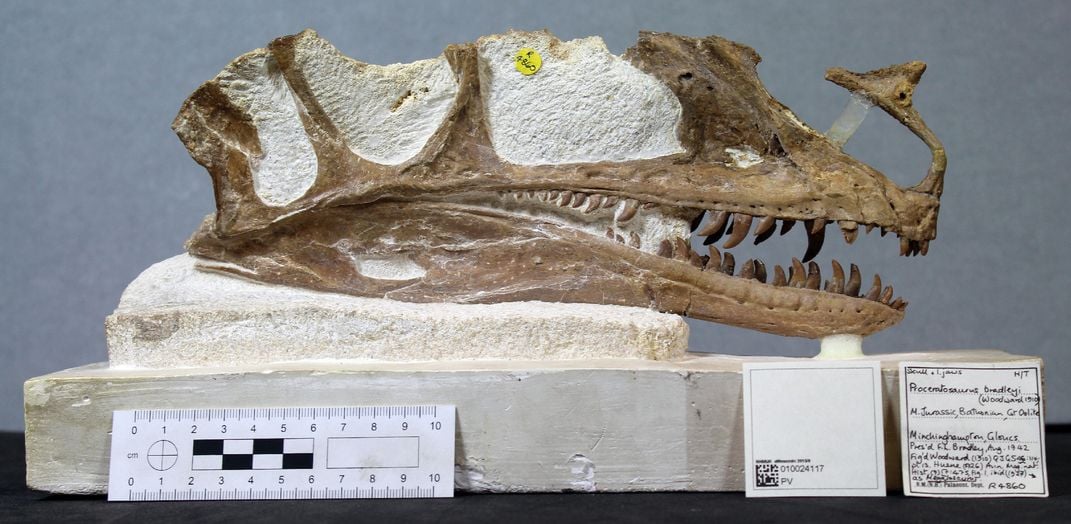
One of the oldest tyrannosaurs yet found, Proceratosaurus strutted around the Jurassic landscapes of ancient England. So far, only a skull of the dinosaur has been uncovered. No other Proceratosaurus fossils have been found since the first discovery in 1910. Still, recent examinations of the dinosaur’s skull indicate that Proceratosaurus represents how the broader tyrannosaur family, technically called tyrannosauroids, started out.
The teeth on the sides of the Proceratosaurus skull are flattened and blade-like. The teeth at the front of the dinosaur’s jaw, however, are D-shaped in cross section, with the curve of the D facing out toward the lip and a flat side facing the interior of the mouth. This tooth shape is one of the telltale signs of tyrannosaurs. The anatomy of Proceratosaurus also closely resembles that of the early tyrannosaur Guanlong from China, including the presence of a crest atop the skull. Comparisons with Guanlong indicate that the Jurassic carnivores both had thin, oval-shaped crests jutting out from atop their skulls, but the structure is broken off in Proceratosaurus. In life, the crest was a single, flat paddle of bone covered in tough keratin and was probably brightly colored. Flashy skull ornaments were important to tyrannosaurs from the start.
Dilong
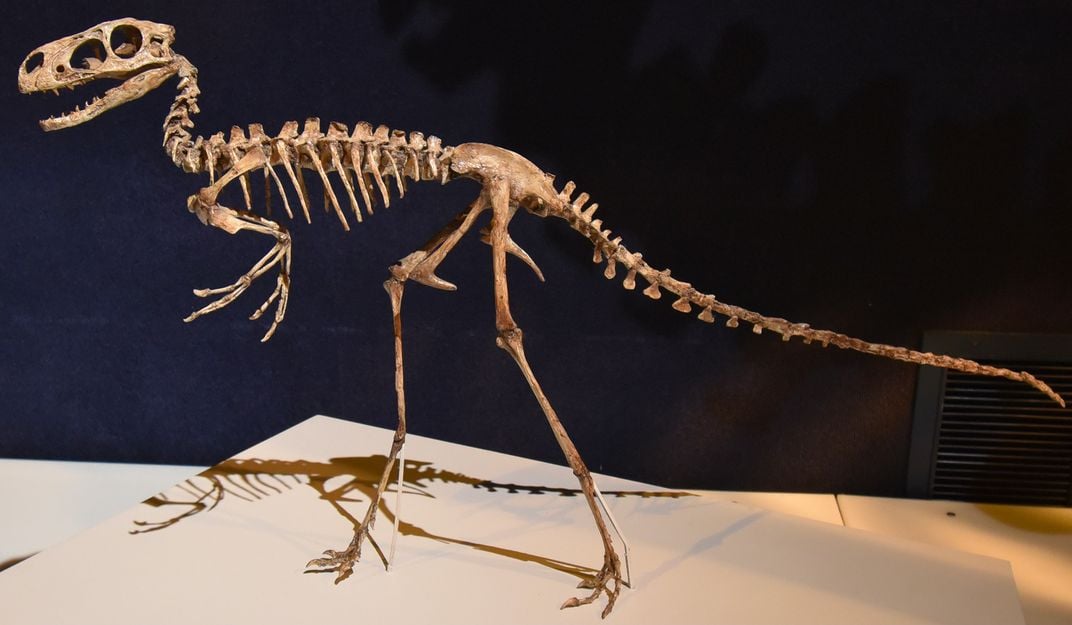
One of the most common questions about T. rex is whether the big carnivore had feathers. For decades, the predator and its relatives were restored as scaly animals. But the discovery of Dilong paradoxus in 2004 changed the story. Not only was Dilong a small, early tyrannosaur, but the carnivore also wore a coat of fuzz.
Dilong lived about 125 million years ago in what’s now China. The tyrannosaur was small, only about five feet long. The predator had three fingers and a long, low skull with D-shaped teeth, just like other tyrannosaurs. What made Dilong special, though, was that fuzzy feathers were found with the bones.
When Dilong was described, paleontologists had only just begun to find feathers on non-avian dinosaurs. The discovery not only showed that early tyrannosaurs had fuzzy coats but also offered another piece of evidence that feathers were far more widespread among dinosaurs than previously thought. The full coverage of feathers on Dilong is unknown. The dinosaur likely had both scales and simple, hair-like feathers. Perhaps additional fossils will reveal just how fluffy early tyrannosaurs truly were.
Yutyrannus
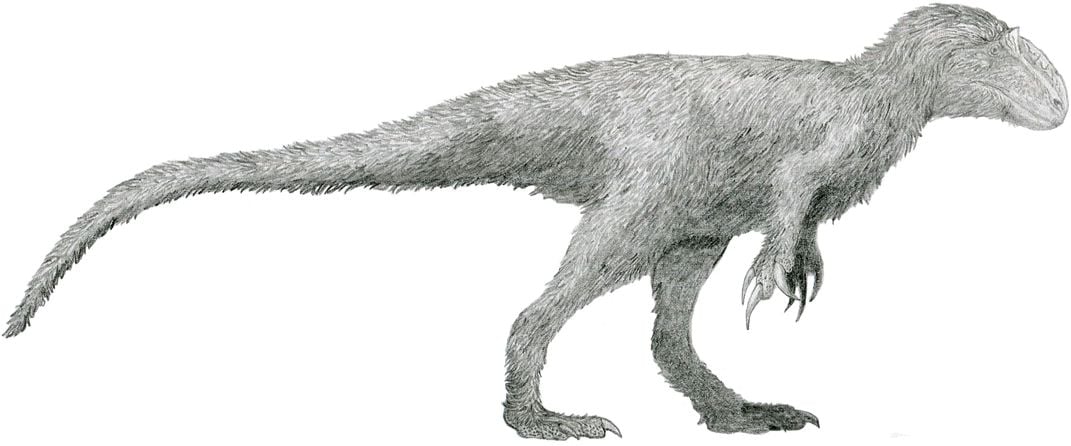
Dilong is not the only tyrannosaur found with feathers. The best evidence yet uncovered for plumage on tyrannosaurs was announced eight years later from a different collection of 125-million-year-old fossils described as Yutyrannus. Instead of patches of fuzz, the skeletons of Yutyrannus were extensively covered in fossil feathers.
To date, at least three Yutyrannus skeletons are known. The dinosaurs were large predators, especially for their time. An adult Yutyrannus was about 30 feet long and weighed more than a ton and a half, comparable to tyrannosaurs that would evolve much later in the Cretaceous. What made Yutyrannus especially remarkable, however, was large patches of feathers found along with the bones. Yutyrannus may have been mostly covered in simple feathers, and these may have helped the dinosaur insulate itself in the relatively cool habitat in which it lived. The find also hints that many other tyrannosaurs were feathery to some extent, including later giants like Gorgosaurus and T. rex.
Moros
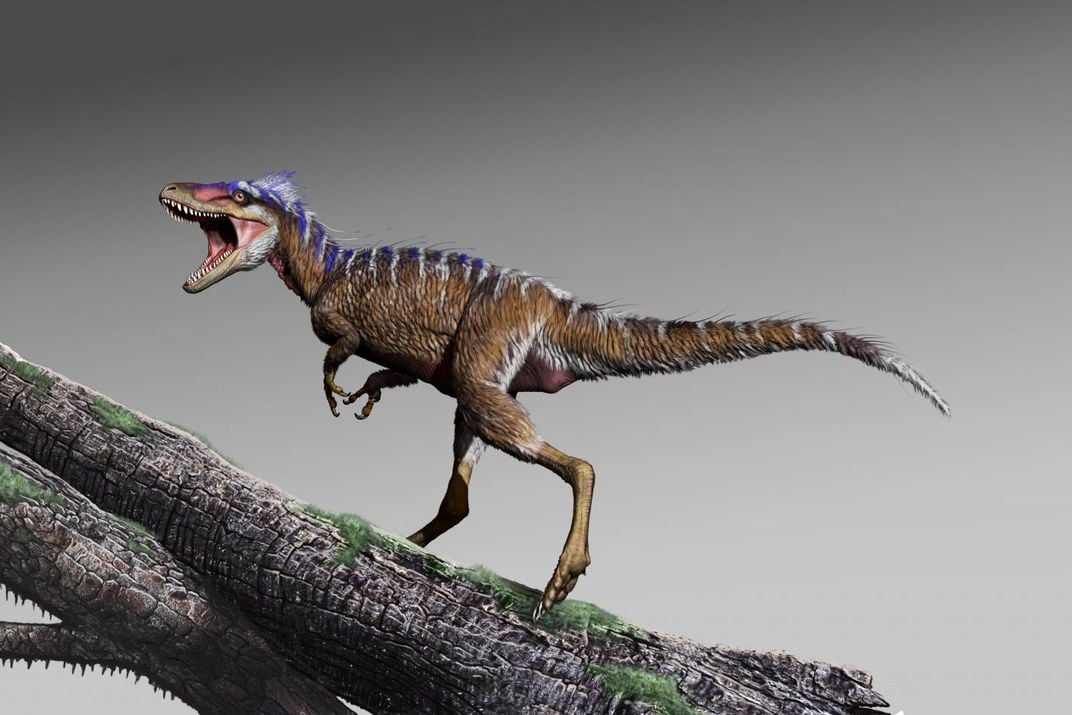
For tens of millions of years, tyrannosaurs were not the apex predators of their habitats. The earliest tyrannosaurs often lived alongside much larger predators, such as Allosaurus and its relatives. Only after the other large carnivores disappeared did tyrannosaurs go through their evolutionary growth spurt, a point underscored by the small tyrannosaur Moros from the 96-million-year-old rocks of Utah.
So far, Moros is only known from leg bones and teeth. The dinosaur’s small stature hints that Moros was still living in a landscape stalked by larger predators, or perhaps it was an early tyrannosaur arrival from Asia that helped set up the later burst of tyrannosaur evolution on the continent.
Khankhuuluu
Tyrannosaur evolution was complicated. The story of their evolution is not one of increasing size and jaw power leading to T. rex but a wildly branching evolutionary bush involving repeated movements back and forth between continents. Khankhuuluu, the latest tyrannosaur to be named, helps outline how tyrannosaur evolution played out in the Cretaceous.
Khankhuuluu lived about 86 million years ago in what’s now the Gobi Desert. The dinosaur is closely related to tyrannosaurs that proliferated in North America between 70 million and 80 million years ago, however, indicating that similar forms of tyrannosaurs must have left Asia around 86 million years ago and led to the evolution of tyrannosaurs like Gorgosaurus in North America. Some of those large tyrannosaurs then crossed back into Asia and evolved into the ancestors of both Tarbosaurus and Qianzhousaurus before the ancestors of T. rex once again crossed back to North America. Khankhuuluu represents the beginning of big bursts of tyrannosaur evolution that spun off some of the largest and most charismatic members of the group.
Gorgosaurus
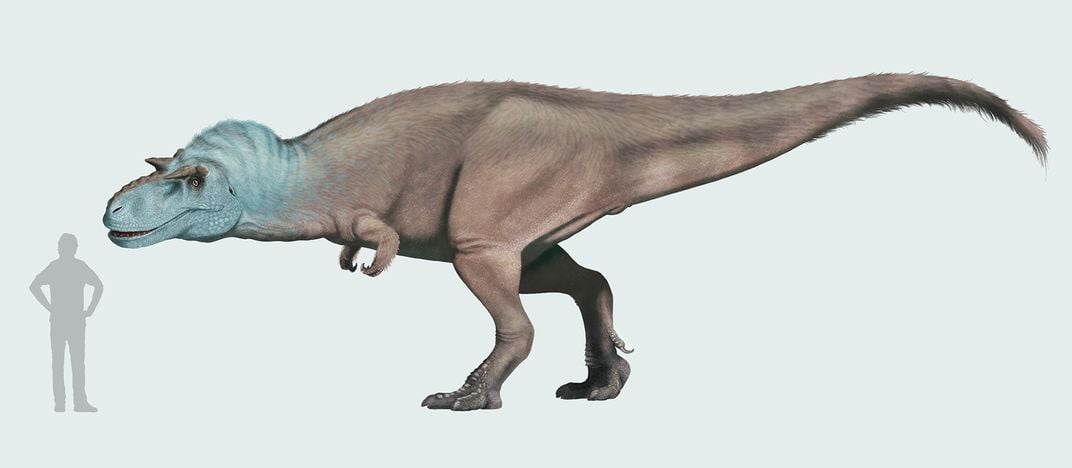
In 1913, fossil collector Charles M. Sternberg found a new carnivore in the 75-million-year-old rocks of Alberta. The reptile was a large carnivore, unusual not just for its size but for bearing only two fingers on each hand. The next year, paleontologist Lawrence Lambe named the dinosaur Gorgosaurus—the “fierce lizard.” The Gorgosaurus fossil was just the first of dozens that have been found to date.
Despite being overshadowed by T. rex, the earlier Gorgosaurus is among the best known of all tyrannosaurs. Paleontologists have found multiple complete and partial skeletons, including of juvenile animals that indicate how Gorgosaurus changed as they grew up. A Gorgosaurus fossil described in 2023 had two pairs of dinosaur legs preserved inside its stomach, demonstrating that the tyrannosaur certainly did eat smaller dinosaurs and preferred the more heavily muscled parts of carcasses when they were available. And, as with other tyrannosaurs, injuries recorded on the fossil bones indicate that Gorgosaurus fought by biting each other on the face.
Nanuqsaurus
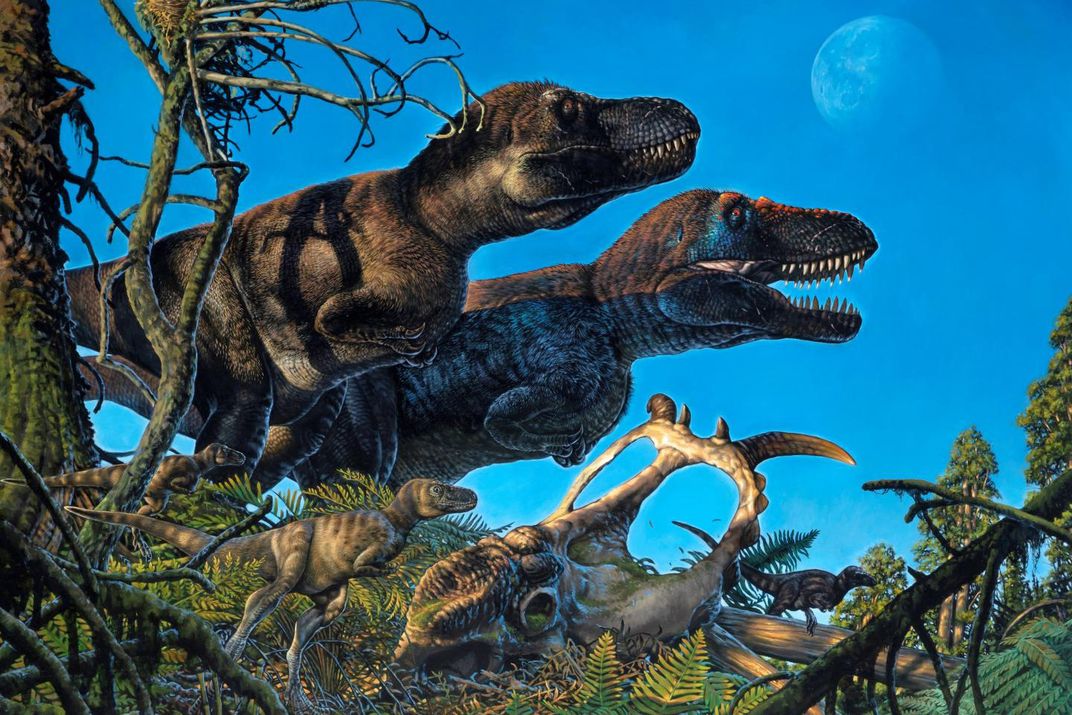
At least one tyrannosaur species sometimes stalked through the snow. Named Nanuqsaurus in 2014, the predator lived in what’s now Alaska. The global climate at the time was warmer than today, but the conifer-filled forests Nanuqsaurus lived among were still within the Arctic Circle. Just like today, the environment would have been cold and dark for several months each year.
Nanuqsaurus stayed in the Arctic environments even when snow dusted the ground and the sun was a long way off from reappearing. Tiny bones from fossil embryos indicate that tyrannosaurs, as well as horned dinosaurs and duckbilled dinosaurs, nested within the ancient Arctic Circle and remained in their home habitats over the long term rather than migrating with the seasons. The presence of Nanuqsaurus in such environments speaks to the flexibility of tyrannosaurs, able to thrive in frostbitten forests as well as sweltering swamps during the Cretaceous.
Dryptosaurus
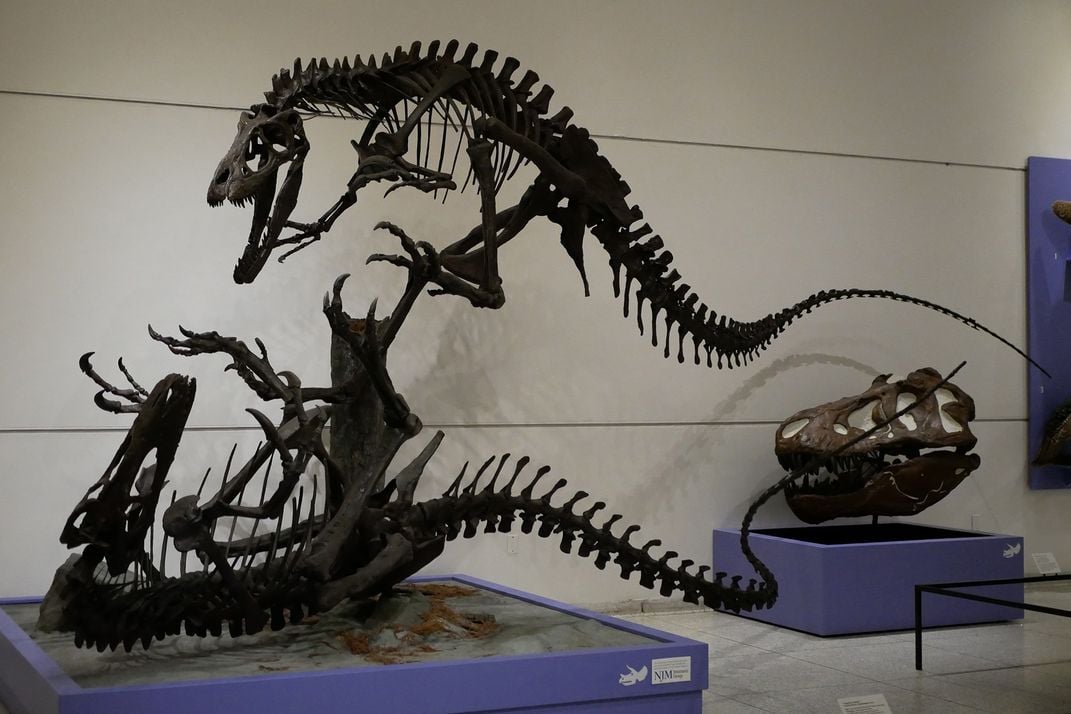
The word “tyrannosaur” was coined when Tyrannosaurus itself was named in 1905, but the predator wasn’t the first of its carnivorous family to be discovered. In 1866, paleontologist Edward Drinker Cope gave the name Laelaps to the partial skeleton of a carnivorous dinosaur found in the Cretaceous sediments of southern New Jersey. The predator had sharp teeth and impressively large hand claws, an animal Cope saw as quite bird-like long before birds were recognized as living dinosaurs.
We know the dinosaur as Dryptosaurus today. In his enthusiasm, Cope didn’t realize that the scientific name Laelaps had already been given to a tick and could not be used again. His rival, Othniel Charles Marsh, renamed the dinosaur Dryptosaurus in a footnote in an 1877 paper on different dinosaurs, surely meant to slight Cope. In the time since their feud, however, paleontologists have recognized that Dryptosaurus was a tyrannosaur that lived at about the same time as T. rex but was significantly different. Dryptosaurus more closely resembled earlier tyrannosaurs, had jaws better suited to slicing than crushing and bore large claws on its three-fingered hands. The dinosaur hints that tyrannosaurs that spread through the eastern part of North America were quite different from their relatives to the west.
Qianzhousaurus
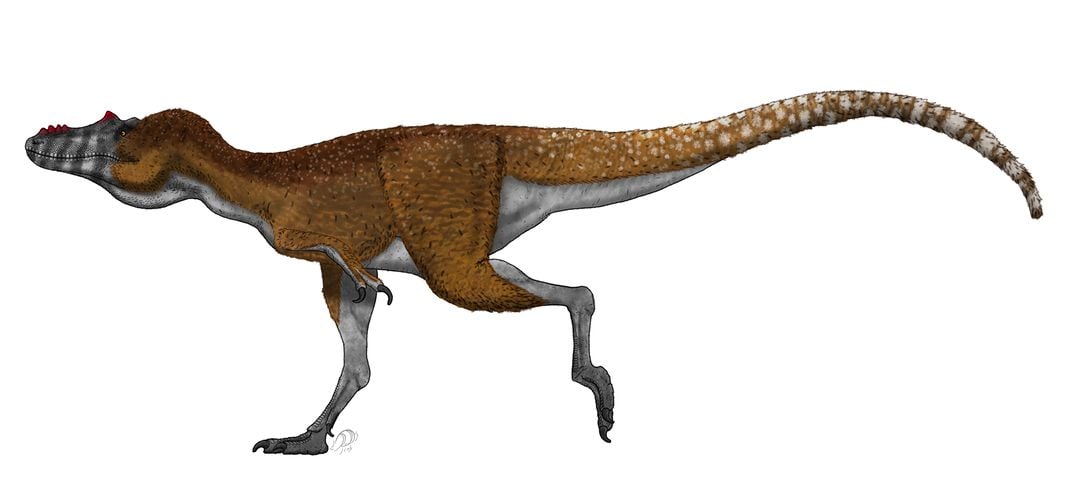
In western North America, Cretaceous ecosystems usually hosted just one large tyrannosaur species at a time. The juveniles and adults behaved so differently that they took up outsize space in their ecosystems as both medium-size and large carnivores. The story was different in ancient Asia. Several tyrannosaur species often lived side by side, each focused on different prey. Around 67 million years ago in what’s now China, the long-snouted Qianzhousaurus filled the role of apex predator alongside the smaller Asiatyrannus.
Qianzhousaurus looked different from the deep-snouted tyrannosaurs of its time. The predator’s skull looks long and low by comparison, and it is dotted with small horns over the snout. In life, Qianzhousaurus reached about 20 feet in length and approached a ton in weight, which was small compared with the Tarbosaurus, a bone-busting predator closely related to T. rex found in rocks the same age. Fossils found in the same formation hint that Qianzhousaurus was among the last of a shallow-snouted tyrannosaur lineage that evolved in Asia and carved out a living feeding on medium-size prey, especially the parrot-like oviraptorosaurs found in the same area.
Tarbosaurus
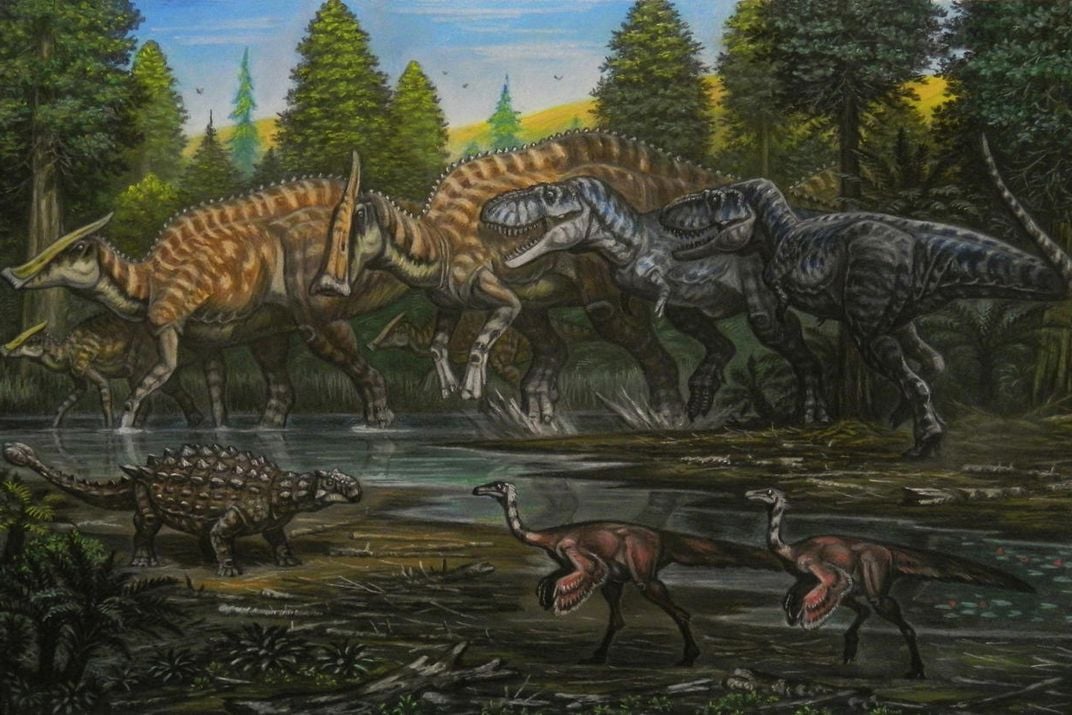
For decades, paleontologists have wondered where T. rex came from. Some experts thought that the giant evolved in North America, the descendant of earlier tyrannosaurs that had been evolving on the continent for millions of years. But the ancestors of T. rex came from another place, across a land bridge that once connected eastern Asia and western North America. The crucial evidence comes from the closest relative of T. rex, the equally impressive Tarbosaurus.
In rough terms, Tarbosaurus was a little smaller than T. rex. The carnivore reached about 33 feet in length and weighed about five tons, with a skull that is a little more slender than that of T. rex. But the two share enough traits in common that they are each other’s closest relatives, sister species that indicate the ancestors of both evolved in eastern Asia. While Tarbosaurus remained in the area, munching on hadrosaurs like Saurolophus and the beaked, sail-backed Deinocheirus, the ancestors of T. rex wandered into North America and brought the bone-crushing behaviors of these tyrannosaurs to the continent.
Full caption of main image: Illustration by Emily Lankiewicz / Jorge Gonzalez / Leoomas via Wikipedia under CC BY-SA 4.0 / James Havens / PaleoGeekSquared via Wikipedia under CC BY-SA 4.0 / ABelov2014 via Wikipedia under CC BY 3.0
